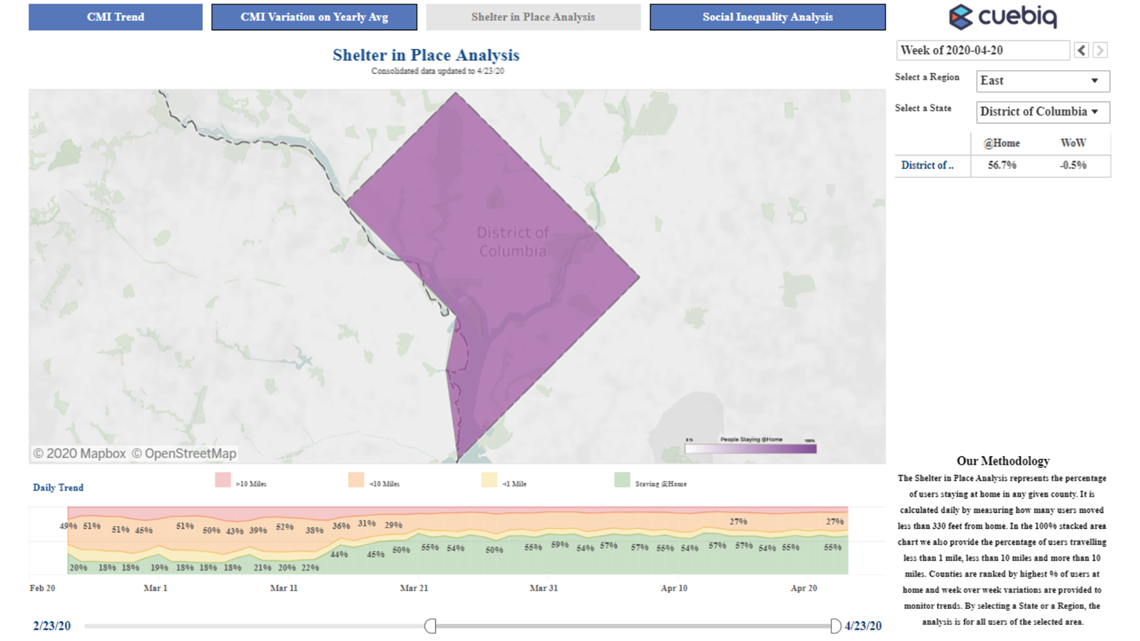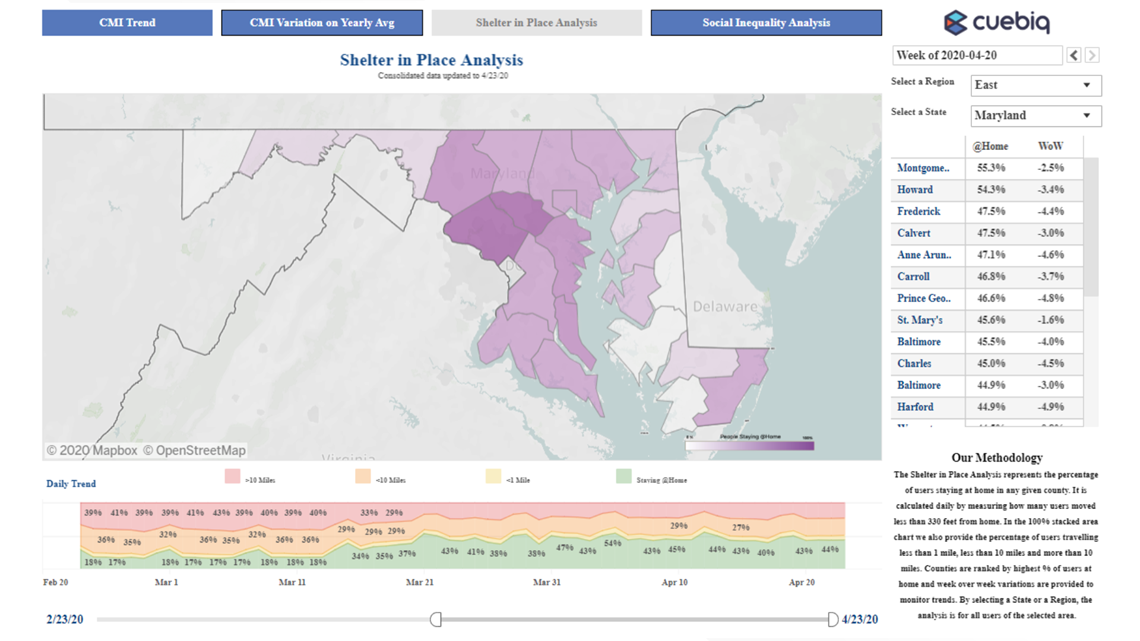WASHINGTON — More than half of D.C.’s residents have stayed within 300 feet of their homes since March 19, according to an analysis of mobility data by the business intelligence company Cuebiq.
The data comes from smartphones and other intelligent devices that report users’ locations. Cuebiq has made the data available publicly to those looking to analyze mobility and store visitation patterns during the COVID-19 crisis.
Cuebiq’s analysis shows the immediate D.C. area has been the most compliant with staying home during the pandemic. Arlington, Fairfax, Howard, Loudoun and Montgomery counties all had more than 50% of their residents sheltering in place over the past week, according to Cuebiq.


Maryland as a whole reported 44% of residents were able to shelter in place over the past week. In Virginia, the state average has ranged from 36-40%.
Virginia, being the largest of the three states, has seen the widest range of residents sheltering in place. In some Northern Virginia Counties, like Loudoun and Fairfax, sheltering in place rates compare with D.C.
In other parts, particularly in the southern portion of the state, shelter-in-place rates have only been 30% or lower.




While the numbers in the D.C. area are promising for continuing to slow the spread of the coronavirus, they suggest an economic disparity in who is able to work from home, arrange for groceries and other necessities to be delivered to their homes and otherwise shelter in place during the state of emergency. Residents in more rural areas likely have to travel further to shop and to work, and potentially risk further exposure in the process.
The positive news is that a WUSA9 analysis of the doubling time of the virus – or, the number of days it takes for total cases to double – has been trending in the right direction since the entire DMV went under a stay-at-home order on March 30. On March 29, cases across the DMV were doubling in less than five days. As of Thursday, the doubling time in D.C. and Maryland was more than 14 days, and more than 11 days in Virginia.

